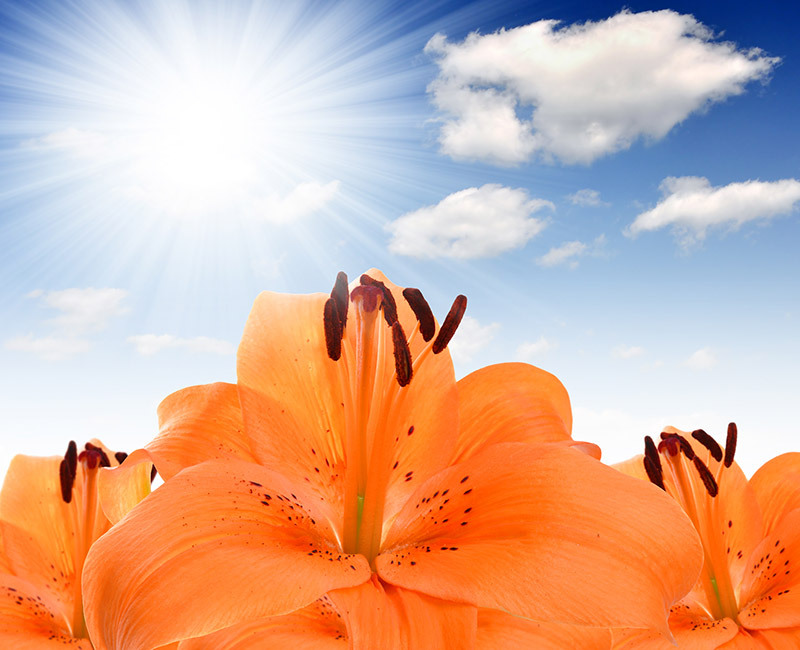The Ultimate Guide to Lasting Poinsettias
Posted on 22/08/2025
The Ultimate Guide to Lasting Poinsettias
Poinsettias are more than just a festive symbol; they are living botanical treasures with the potential to grace your home with vibrant color for months. Whether you have received a poinsettia plant as a thoughtful gift or picked one to brighten up your holiday decor, knowing how to care for it can mean the difference between a fleeting show and a lush, thriving display. This comprehensive, SEO-optimized guide dives into every aspect of lasting poinsettias - from selection to year-round maintenance - to help you enjoy their beauty longer than ever.
Why Poinsettias Are a Holiday Favorite
Poinsettias (Euphorbia pulcherrima) are native to Mexico and Central America. Their lush, red, pink, or white bracts (which look like petals but are actually modified leaves) have made them an enduring symbol of Christmas and winter festivities worldwide. But the secrets to keeping these lasting poinsettias thriving extend far beyond the holiday season. With the right care, you can enjoy vibrant poinsettia displays well into spring - or even rebloom your plant for years to come!

How to Select a Healthy Poinsettia Plant
The journey to a resilient, long-lasting poinsettia starts at the point of purchase. Choose a robust plant, and you've already won half the battle against early leaf drop and disappointment.
Tips for Selecting Lasting Poinsettias:
- Look for bright, richly colored bracts with no signs of spotting or wilting.
- Inspect the true flowers: these are the small yellow buds (cyathia) in the center. A lasting poinsettia should have cyathia that are intact and not dropping pollen.
- Check the foliage: healthy leaves are deep green, lush, and undamaged. Avoid plants with yellow, drooping, or fallen leaves.
- Gently shake the plant. If leaves fall easily, pick another - this one is already stressed or root-bound.
- Ensure the plant is well-watered and not root-bound in its pot. Excessively dry or waterlogged soil can cause short-lived blooms and other problems.
Essential Care for Lasting Poinsettias
Bringing your poinsettia home is just the beginning. The following points break down essential care for extending the lifespan and vibrancy of your plant.
1. Location: Light and Temperature for Lasting Poinsettias
- Light: Place your poinsettias in a bright but indirect light; 6-8 hours per day is ideal.
- Temperature: They thrive in temperatures between 65-75?F (18-24?C) during the day and 60-65?F (15-18?C) at night. Protect them from drafts and sudden temperature changes--avoid placing near heating vents, fireplaces, or cold windows.
Tip: Avoid exposing your lasting poinsettia to temperatures below 50?F (10?C), as cold can kill foliage or cause bract drop.
2. Watering Strategies for Lasting Poinsettias
- Water when the soil feels dry to the touch, but be careful not to overwater.
- Drainage is crucial. Remove any decorative foil around the pot or punch holes to prevent water from accumulating.
- Empty saucers after watering to prevent root rot.
Pro Tip: Use lukewarm water and try to water at the base of the plant, avoiding wetting the leaves. Never let the poinsettia sit in standing water!
3. Humidity and Air Quality
- Poinsettias enjoy moderate humidity. If your home is particularly dry in winter, consider placing a tray of water near the plant or using a humidifier.
- Keep poinsettias away from dry heat sources; forced air can lead to rapid leaf loss.
4. Fertilizing for Longevity
- During the blooming season, fertilizing is not necessary.
- For lasting poinsettias throughout the year, begin monthly feedings with a balanced, all-purpose houseplant fertilizer after blooming has ended (usually late winter or early spring).
Creative Display Ideas for Lasting Poinsettias
Don't let your poinsettias blend into the background! Show them off with some of these creative ideas to keep them the center of attention:
- Ornamental Groupings: Combine several different colored poinsettias in a basket for a lush and dramatic effect.
- Stylish Planters: Place your poinsettia in decorative ceramic or metallic pots to complement your home's aesthetic.
- Centerpieces: Poinsettias make excellent table centerpieces, especially when paired with seasonal greenery.
How to Extend the Life of Your Poinsettia After the Holidays
Post-Holiday Poinsettia Care
Once the holidays are over, your lasting poinsettia can transition from a seasonal centerpiece to a year-round houseplant with these steps:
- Continue providing bright, indirect light and moderate watering through winter and early spring.
- When danger of frost has passed (late spring), you may move your poinsettia outdoors to a partially shaded location.
- As new growth appears (usually April or May), prune back stems to about 6 inches to encourage bushiness.
- Begin fertilizing monthly with an all-purpose plant food.
- Repot your poinsettia if it becomes root-bound; choose a slightly larger container with fresh potting mix.
How to Get Your Poinsettia to Rebloom
Many people discard their poinsettias after the bracts fade, but with effort and the right care, you can coax your plant to rebloom and enjoy lasting poinsettias year after year.
Poinsettia Reblooming Process--Step by Step
- Spring: After blooming ends (usually late winter or early spring), cut the plant back to about 4-6 inches above the soil. Continue to water and feed as above.
- Summer: Move the plant outdoors when night temperatures remain above 50?F (10?C). Keep in bright, indirect light, watering as needed.
- Mid to Late Summer: Pinch growing tips back every few weeks to promote a bushier plant.
- Late September to Early October: Bring the plant indoors before night temperatures drop below 55?F (13?C).
- Initiate the Bloom Cycle: Poinsettias are photoperiodic, meaning they require 14-16 hours of complete darkness every night for 8-10 weeks to rebloom. Place in a dark closet or cover with a box from 5 pm to 8 am, then return to bright, indirect daylight during the day.
- Early December: Once colored bracts show, you can resume normal care and enjoy your renewed holiday display!
Common Poinsettia Problems (and Solutions)
Even lasting poinsettias can run into trouble. Recognizing and solving issues quickly keeps your plants healthy.
Leaf Drop
- Causes: Sudden temperature changes, drafts, overwatering, or underwatering.
- Solution: Maintain stable temperature, avoid drafty areas, and adjust your watering routine. Check that the plant's container has adequate drainage.
Wilting
- Causes: Generally caused by dry soil or root rot from sitting in water.
- Solution: Water thoroughly when topsoil is dry but ensure no water accumulates.
Pest Issues
- Common pests: Whiteflies, spider mites, and mealybugs.
- Solution: Rinse leaves with lukewarm water or treat with insecticidal soap as needed. Isolate affected plants to prevent spread.
Yellowing Leaves
- Causes: Overwatering, poor drainage, or nutrient deficiencies.
- Solution: Check drainage, let topsoil dry between waterings, and consider fertilizing in the growing season.
Are Poinsettias Toxic?
There is a common myth that poinsettias are poisonous. In reality, while the leaves and sap can cause mild discomfort if ingested (especially for pets or young children), severe reactions are rare. The sap can cause skin irritation in sensitive individuals.
- Keep poinsettias out of reach of curious pets and children.
- Wash hands after pruning or handling.
Frequently Asked Questions
How long do poinsettias last indoors?
A well-cared-for poinsettia plant can last 2 to 3 months indoors with optimal care. With dedication, they can thrive year-round.
Can I plant my poinsettia outside?
Yes - in mild climates (zones 9-11), poinsettias can be planted outdoors in partial shade, where they can grow into sizeable shrubs!
How can I tell if my poinsettia is stressed?
Leaf drop, yellowing, or spotting often signals stress due to environmental factors, overwatering, or pests. Review the care guidelines above to troubleshoot causes.
Fun Facts About Poinsettias
- The colored "petals" of the poinsettia are actually bracts; the real flowers are the tiny yellow buds at the center.
- December 12th is National Poinsettia Day in the United States.
- Poinsettias were introduced to America by Joel Poinsett, the first U.S. ambassador to Mexico.

Poinsettias Year-Round: Beyond the Holidays
Lasting poinsettias aren't just for Christmas. Their vibrant foliage can freshen up your home throughout the year, especially if you explore newer cultivars with colors ranging from marbled pinks to brilliant yellows and even orange!
With proper pruning and care, your poinsettias can be part of your indoor plant collection all year long.
Conclusion: Enjoying Lasting Poinsettias
Incorporating lasting poinsettias into your indoor garden can bring joy and color for many months - and, with extra attention, for years to come. Remember that successful care comes down to a few key steps: healthy selection, optimal light, careful watering, and the right temperature. With a bit of patience, you may even enjoy the satisfaction of seeing your poinsettia rebloom for the next holiday season.
We hope this Ultimate Guide to Lasting Poinsettias has provided all the information you need to confidently care for your poinsettia and help it thrive. For more in-depth gardening tips and houseplant care, bookmark this guide and share it with fellow plant enthusiasts. Keep your poinsettia vibrant, healthy, and beautiful all year round!
Latest Posts
Enchanting Floral Selections Perfect for Birthdays
The Ultimate Guide to Lasting Poinsettias
Which garden blossom is your personality twin





